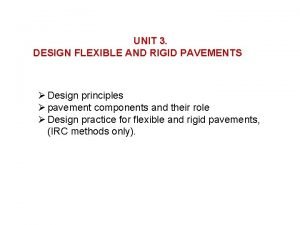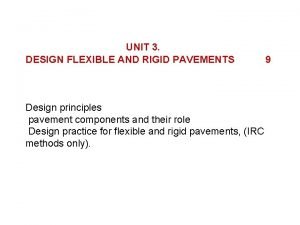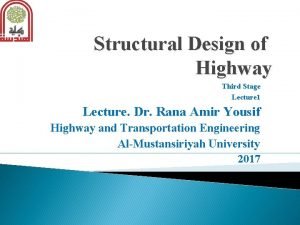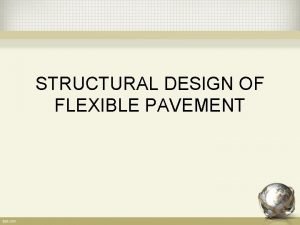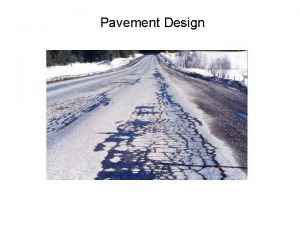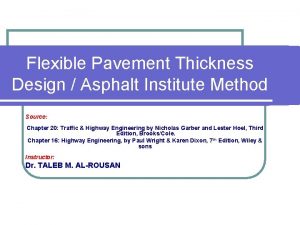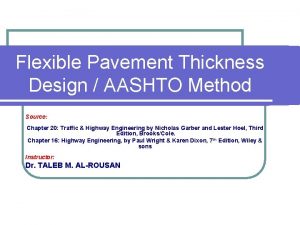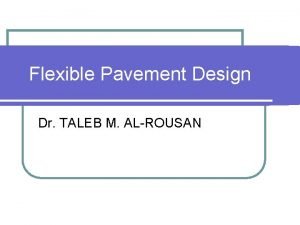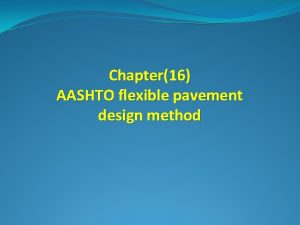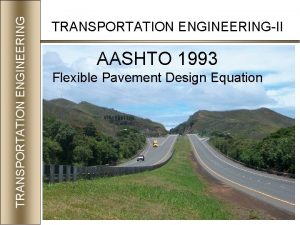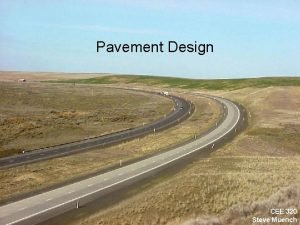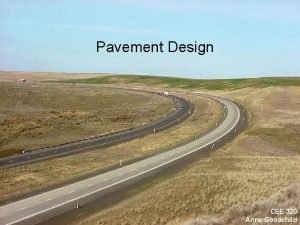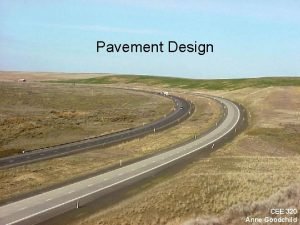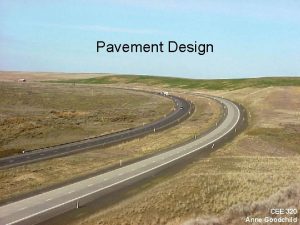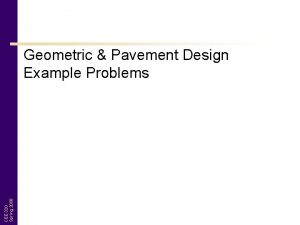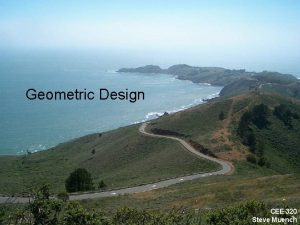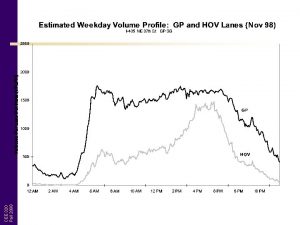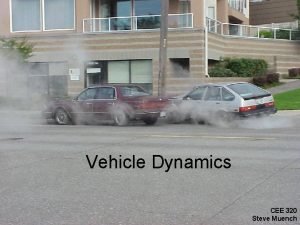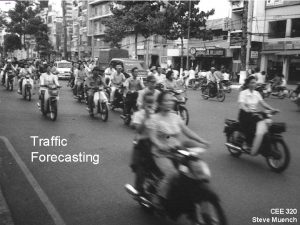CEE 320 Winter 2008 Geometric Pavement Design Example












- Slides: 12

CEE 320 Winter 2008 Geometric & Pavement Design Example Problems

Problem 3. 15 CEE 320 Winter 2008 Due to crashes at a railroad crossing, an overpass (with a surface 24 ft above the existing road) is to be constructed on an existing level highway. The existing highway has a design speed of 50 mph. The overpass structure is to be level, centered above the railroad, and 200 ft long. What length of the existing level highway must be reconstructed to provide an appropriate vertical alignment?


Problem 3. 27 CEE 320 Winter 2008 A developer is having a single-lane raceway constructed with a 100 mph design speed. A curve on the raceway has a radius of 1000 ft, a central angle of 30 degrees, and PI stationing at 1125+10. If the design coefficient of side friction is 0. 20, determine the superelevation required at design speed (do not ignore the normal component of the centripetal force). Also, compute the degree of curve, length of curve, and stationing of the PC and PT.


Geometric Design Example A 2 -lane (10 ft wide lanes) combined horizontal and crest vertical curve is currently posted for a 35 mph speed limit and is designed for 40 mph. Curve data are: • Horizontal: L = 580 ft, Δ = 60°, e = 6%, Ms = 30 ft • Vertical: L = 580 ft, G 1 = 3%, G 2 = -2. 5% Is this curve adequately designed for 40 mph? CEE 320 Winter 2008 Because this curve is often covered in packed snow and ice, the county wants to post a recommended speed limit for these conditions. What speed limit do you recommend?

Problem 3. 37 Two straight sections of freeway cross at a right angle. At the point of crossing, the eastwest highway is at elevation 150 ft and is a constant +5. 0% grade (upgrade in the east direction), the north-south highway is at elevation 125 ft and is a constant -3. 0% grade (downgrade in the north direction). Design a 90 -degree ramp that connects the northbound direction of travel to the eastbound direction of travel. Design the ramp for the highest design speed (to the nearest 5 mph) without exceeding a minimum D of 8. 0. (Assume the PC of the horizontal curve is at station 15+00, and the vertical curve PVIs are at the PC and PT of the horizontal curve). Maximum allowed superelevation by design standards is 12%. Determine the following: CEE 320 Winter 2008 1. 2. 3. 4. 5. Stationing and elevations of the horizontal curve PC and PT Horizontal curve radius and length Stationing and elevations of the vertical curve PVCs and PVTs Vertical curve lengths Length of constant grade in between the 2 vertical curves (if any)

North Downhill (-3. 0%) Uphill (+5. 0%) EW freeway Elevation difference = 25 ft NS freeway



Pavement Design Example CEE 320 Winter 2008 The pavement on Stevens way is slowly being switched to PCC a few thousand yards at a time. Assuming all the heavy vehicle traffic on Stevens Way is due to bus traffic, estimate a rigid pavement design using the following data: • Design life = 40 years • Articulated bus average axle weights: • Front = 15, 000 lb • Middle = 18, 500 lb • Rear = 11, 500 lb • Regular (non-articulated) bus average axle weights: • Front = 12, 200 lb • Rear = 20, 000 lb • Typical school day = 80 regular, 40 articulated in one direction • Bus traffic growth rate = 2% per year • Use undowel joints and crushed stone base material

Pavement Design Example What would a flexible pavement design be for the same loading? Assume: CEE 320 Winter 2008 • Two layers (HMA and a granular base course) • Subgrade MR = 10, 000 psi
 Flexible pavement vs rigid pavement
Flexible pavement vs rigid pavement Standard axle load for pavement design
Standard axle load for pavement design Compare flexible and rigid pavement
Compare flexible and rigid pavement 2008 2008
2008 2008 Asphalt pavement design example
Asphalt pavement design example Cbr method of pavement design
Cbr method of pavement design Asphalt pavement design example
Asphalt pavement design example Flexible pavement thickness
Flexible pavement thickness Asphalt pavement design example
Asphalt pavement design example Flexible pavement design / aashto method example
Flexible pavement design / aashto method example Aashto structural number calculator
Aashto structural number calculator Winter kommt winter kommt flocken fallen nieder
Winter kommt winter kommt flocken fallen nieder Winter kommt winter kommt flocken fallen nieder
Winter kommt winter kommt flocken fallen nieder
